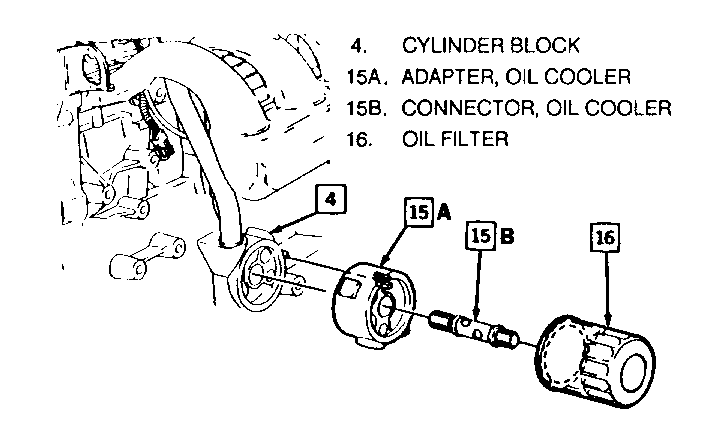SERVICE MANUAL UPDATE ENGINE OIL COOLER SERVICE

VEHICLES AFFECTED: 1989-90 L,N, W, WITH HIGH OUTPUT QUAD 4 (VIN A
The following supplements engine oil cooler information and service procedure in the 1989 N Car service manual, Section 6A and 6B. Additionally, this information supersedes engine oil cooler information and service procedures in the 1990 N, W and L Car service manuals, Section 6A7 and 6B. 1989 N models produced with the High Output Quad 4 engine were assembled with an engine oll cooler.
Recent engine oil temperature tests conducted on the high output Quad 4 indicate that an engine oil cooler is no longer required. Consequently, 1990 N and W models equipped with a high output Quad 4 will not use an engine oil cooler.
Should it be necessary to service any oil cooler system component, replacement parts can be obtained through CANSPO. It is also permissible to disconnect the engine oil cooler system from these vehicles. Disconnecting the oil cooler will have no effect on engine performance or durability. To disconnect the oil cooler system, follow the steps listed below.
PROCEDURE: DISCONNECTING ENGINE OIL COOLER SYSTEM ------------------------------------------------- 1. Remove engine oil cooler lines from oil filter adapter and radiator.
2. Using a hacksaw, cut the flare off the radiator end of the oil cooler inlet and outlet lines and remove the threaded fitting nuts. Retain nuts for use later in this procedure. Discard cooler lines.
3. Remove oil filter.
4. Remove and discard oil cooler adapter to block connector. Refer to illustration.
5. Remove and discard oil cooler adapter.
6. Install new oil filter to engine block connector, part number # 22538711. Torque connector to 21 ft. lbs. (29 NM).
7. Clean the inside of the oil cooler line fitting nuts removed in Step 2. Fill inside of nuts with RTV sealant and let stand until the RTV begins to cure.
8. Install and tighten fittings nuts into previous oil cooler line locations at radiator.
IMPORTANT: Installing fitting nuts at previous oil cooler line locations in the radiator serve for appearance only. There will be no oil flow from the engine oil cooler tank of the radiator.
9. Install oil filter.
10. Correct engine oil level.
11. Start engine and inspect for oil leaks.

General Motors bulletins are intended for use by professional technicians, not a "do-it-yourselfer". They are written to inform those technicians of conditions that may occur on some vehicles, or to provide information that could assist in the proper service of a vehicle. Properly trained technicians have the equipment, tools, safety instructions and know-how to do a job properly and safely. If a condition is described, do not assume that the bulletin applies to your vehicle, or that your vehicle will have that condition. See a General Motors dealer servicing your brand of General Motors vehicle for information on whether your vehicle may benefit from the information.
